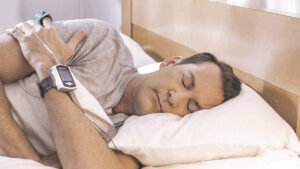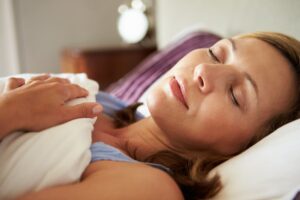
Hello there! Are you diagnosed with sleep apnea? The first step you must take is to visit the clinic and talk to your doctor. Do you know you must consider your sleep position before choosing a CPAP machine? Do you know there are CPAP machines for every sleep position? Of course, there are. We’ve heard several people talking about how their sleep position affects the outcome they ought to get from using a CPAP machine Australia.

Honestly, it is expedient to know that CPAP machines are created based on people’s sleep position. In other words, there may be issues if you choose the wrong CPAP machine. If you are a side sleeper, you need to get a CPAP mask for side sleepers.
Of course, we know this fact is hidden from many. But we assure you that you will get complete details about the CPAP machine and sleep positions. Hence, some people are lucky to have met a qualified doctor or a sleep specialist. And their sleep specialist might have given them instructions about choosing a CPAP machine based on their sleep position.
Are you seeing the symptoms of sleep apnea? Therefore, there’s no cause for alarm. In this write-up, we will discuss the tips on choosing a CPAP machine based on sleep position. But before we move further, it would be nice to create a piece of background knowledge. So, let’s discuss the meaning of CPAP machines briefly.
What is a CPAP machine?

Continuous positive airway pressure, or CPAP, employs a ventilator to supply positive air pressure to your airway through a nose mask, keeping it open to improve breathing.
It could take some getting used to, but the mask is designed so you can sleep without worrying about your breathing rhythm being disturbed. Furthermore, obstructive sleep apnea is commonly treated with CPAP therapy.
A hose and mask, or nosepiece, are used by a CPAP machine to deliver continuous and steady air pressure. A person with sleep apnea experiences one or more breathing pauses or short breaths while asleep.
In addition, a CPAP (Continuous Positive Airway Pressure) machine provides the upper airways with constant, steady air pressure. Obstructive Sleep Apnea (OSA), a disorder in which patients have trouble breathing in and out while sleeping, is commonly treated with it.
Apnea happens when breathing stops suddenly, and the airflow into the lungs is temporarily blocked or eradicated. Over 22 million Americans, according to the American Sleep Apnea Association, have sleep apnea, with 80 percent of moderate and severe cases going undetected. The Cpap mask has adjustable straps. That way, you can do the pressure settings as your doctor prescribes. For example, it could be lower pressure or higher pressure.
Most CPAP masks are made of silicone. Also, CPAP has two pressure settings and a nasal pillow mask. A nasal mask will protect your skin. Honestly, CPAP treatment is the best way to solve obstructive sleep apnea. Contact your sleep doctor if you want a good night’s sleep.
Then, please ensure you buy a new CPAP machine. If you get the right CPAP machine, you will enjoy some benefits.
How to choose a CPAP machine according to your sleep position
The full-face, nasal, and nasal pillow masks are the three most widely used CPAP mask types. Nasal masks cover the nose, whereas full-face masks cover the lips, making them the bulkiest option. The least intrusive masks are nasal pillow masks, which cover only the nostrils and lack a hard shell.
So, because CPAP machines need a tight seal to prevent air leaks, sleeping in a position that presses on the mask can reduce the effectiveness of your therapy. The headpiece of a CPAP mask can also disrupt sleep, mainly if it contains rigid anchor straps or rugged plastic buckles.
While selecting one, you should consider the CPAP mask’s overall size, shape, and placement on your face. Finding a mask that is both functional and comfortable for sleeping is the objective. First, let’s discuss CPAP machines for sleep positions.
1. CPAP machines for side sleepers

One of the finest sleeping positions for treating sleep apnea is on your side because it keeps gravity from affecting your airway the way it does when you sleep on your back.
Unfortunately, it can be challenging for side sleepers to locate the ideal CPAP mask.
In general, nasal pillow masks are a good choice for side sleepers. The mask can maintain its seal even if the sleeper moves their face toward the pillow because its low profile often lays higher than the pillow itself.
Another choice for side sleepers to think about is nasal masks, which wholly or partially enclose the nose. Air leaks can be avoided with a good seal and soft, adjustable headgear, but side sleepers may still need a CPAP-friendly pillow to fit their mask. You can find out what foods you should eat or avoid and the effects of not getting the nutrients your body need by clicking here.
2. CPAP machines for back sleepers

Back-sleeping CPAP users enjoy a wide range of mask options because even full-face masks fit comfortably in this position. However, even though sleeping on your back may be ideal if you use a CPAP mask, doing so increases the likelihood that your airway will collapse due to gravity.
You will probably feel at ease wearing any efficient mask that meets your other demands if your doctor is aware that you sleep on your back and has not advised you to switch positions. Removing your mask in this position is also challenging, while certain back sleepers may have trouble with single-strap headgear.
3. CPAP machines for stomach sleepers
The least popular sleeping position is on one’s stomach, and those who do have special considerations while selecting a CPAP mask. Most masks press onto the face because of the location, which is uncomfortable and frequently results in air leakage.
Your head may be forced into a posture that puts stress on your neck and can result in pain or stiffness the following day. However, it depends on the size of your mask.
Due to these reasons, the majority of people can only sleep on their stomachs when using a nasal pillow mask. Because of their low profile, nose pillows are perfect for this because they are less prone to become dislodged or cause pain in any posture.
Even those who wear nasal pillow masks should check that their actual pillows can accept the mask.
Some masks also include tubes placed around the temples, which may result in air obstruction depending on your position and the firmness of your pillow.
Making Use of a CPAP Pillow to Improve Mask Fit
Not all CPAP users can utilize all CPAP mask styles; therefore, you should choose your CPAP mask based on your sleep specialist’s recommendations. A CPAP pillow may provide a solution if the mask you must wear prevents you from sleeping in your preferred posture. Despite sleeping on your side, these cushions are built to accept masks better than a standard pillow.
Conclusion
Dear reader, we hope you’ve seen something inspiring here. In this article, we discussed the meaning of CPAP machines. Then, we also discussed some facts about choosing a CPAP machine based on your sleep position. You need to enjoy life. So please don’t choose other options except for the CPAP device.
Finally, you have the right to ask questions regarding this topic. Thanks for reading.
Must Read:
- How an Oxygen Compressor Can Improve Your Home Oxygen Therapy Experience
- How CPAP Machines Improve Sleep Quality and Prevent Sleep Apnea Complications
- Buy CPAP Mask Australia: Affordable Options for Every Budget
- CPAP Masks Australia: A Complete Guide for Buyers
- Alternative Sleep Apnea Treatments for Those Who Can’t Tolerate CPAP



